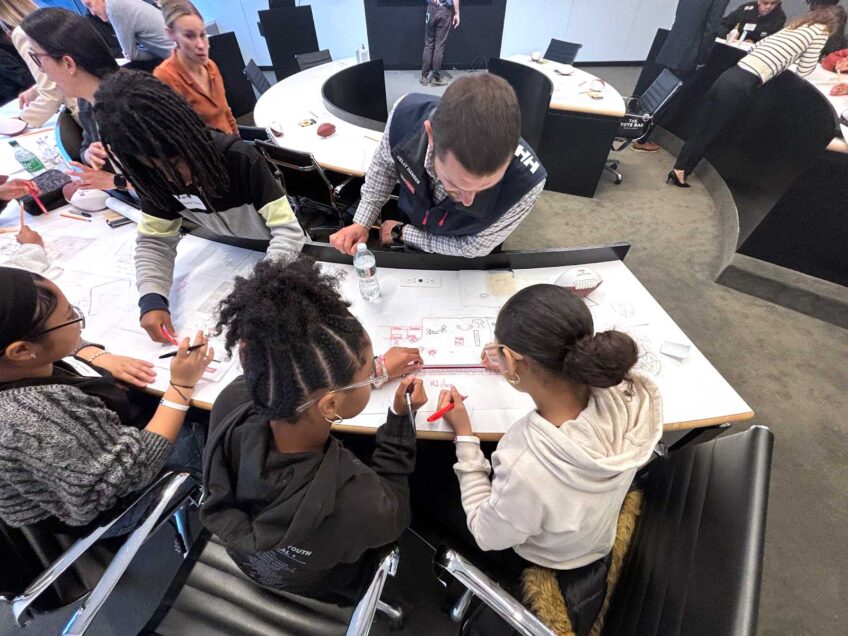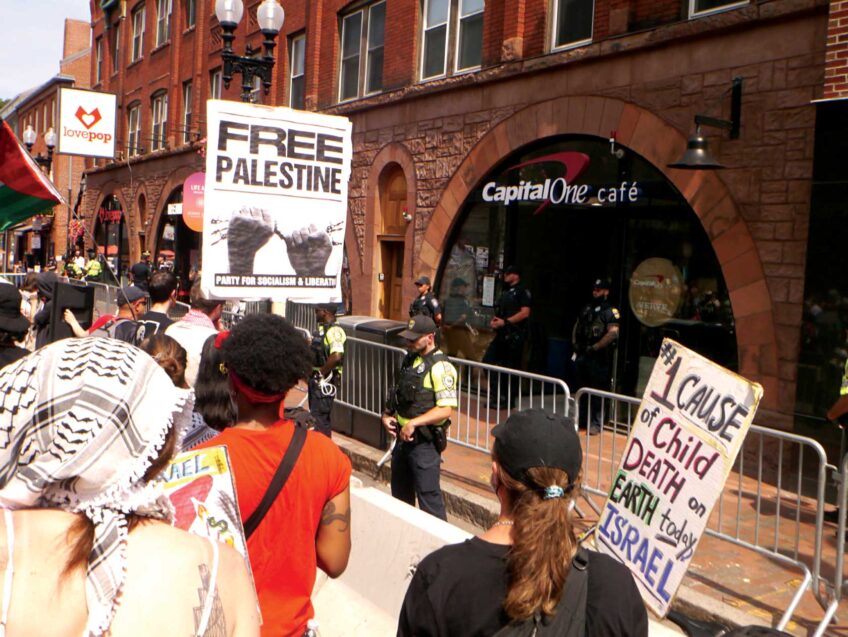City Councilor Ayanna Pressley held a hearing last week aimed at establishing a coordinated and sustainable system for psychological trauma response in Boston.
The devastating effects of homicides, shootings, domestic abuse and other traumas last far past the incident and affect more than the immediate victims.
Currently various city agencies and community organizations offer services, but are not knitted together into a collaborative network, so many residents remain unaware of resources available to them.
“It is still not at a point where there is a standard protocol whereby I could provide you with a flowchart for, if someone has experienced or is exposed to trauma, this is who to call,” said Pressley. She said the city needs a unified protocol for service provision that will outlast the individuals currently doing trauma work.
Trauma that continues to wound
More than 150 studies have found that experiencing trauma in childhood increases the likelihood that an individual will later develop health problems and health-adverse behaviors, said Renee Boynton-Jarrett, MD, a primary care pediatrician at Boston Medical Center.
Kaiser Permanente and the Center for Disease Control and Prevention’s Adverse Childhood Experiences Study surveyed more than 13,000 adults on their exposure to parental mental health issues, physical or sexual abuse and other traumatic experiences before age 18. The study concluded that adults with four or more such experiences were four to twelve times more likely to experience alcoholism, depression, drug abuse and suicide attempts. Boynton-Jarrett said that the difference in life expectancy between these individuals and those who did not report adverse childhood experiences was 19 years.
They also carried higher risk of obesity, heart disease and several other conditions. One cause, said Boynton-Jarrett: chronic stress’ effect on the body.
“We know definitively that early childhood experiences have a profound impact not just on your health and wellbeing during childhood but on your long-term health outcomes,” she said.
Trauma also interrupts a child’s individual to perform well in school, said Karla Estrada, deputy superintendent of student support services for Boston Public Schools.
“It’s not something that gets left behind in order for academic development to move forward,” she said.
Ripple effects
A homicide affects the victim’s entire social web, from immediate loved ones to neighbors or coworkers adjusting to the absence of that person or children adjusting to the reality of death.
“Trauma is not just [affecting] that person,” said Pressley. “It’s the bodega owner that no longer sees that person, it’s the office, it’s the school community, it’s the empty seat at the dinner table.”
One task for trauma workers is to determine the groups impacted. For instance, said Atyia Martin, Boston’s Chief Resilience Officer, if a student moved between schools, outreach to both schools may be needed.
“It’s one of the biggest myths we have about trauma that it is an individual experience. Impact of trauma has ripple effects on the community that are often invisible, silent and unaddressed and unvalidated,” said Boynton-Jarrett.
A treatable crisis
If properly handled, trauma is treatable, said Boynton-Jarrett. This means response within the first 72 hours and continued availability of services, as posttraumatic symptoms may emerge long after the incident or may need many sessions to treat.
“Trauma is not an experience that cannot be recovered from if you are able to reestablish safety, if you are able to re-establish social connections and if you have access to timely, appropriate and sensitive treatment,” she said.
Coordination and collaboration
Currently psychological trauma services are offered by many organizations and individuals that may not use uniform procedures.
These include the Boston Housing Authority, Boston Police Department, BPS, the Department of Public Safety, Boston Health Commission, Boston Centers for Youth and Families and Chief Resiliency Officer Martin as well as hospitals, community organizations and community health centers.
Lack of a coordinated, standardized system for reaching out to victims and communities post-incident means that not all residents may be aware that there are services or how to get them.
“I’m often at a community meeting where someone says, ‘You know what would be great? If we had this.’ And I say ‘Well, great thing is, we do,’” recounted Pressley.
Many spoke on the need for coordination.
Huy Nguyen, interim executive director at the Boston Public Health Commission, said creating a larger network of partners would allow BPHC to connect more individuals with services. Getting this network functional, he said, could take a few years.
Martin works with psychological trauma response protocols based upon the BPHC’s emergency management principles. The protocols include gathering and sharing information between responders, assessing community need, reaching out to the people who may be affected to educate them about the effects of trauma and the resources available and following up to ensure needs are met. Response to the Boston Marathon bombing modeled effective collaboration, and response protocols were updated this summer.
Martin said that she is running a pilot program for integrating individual residents, nonprofits and city agencies into one response network and expects a trauma response system to roll out next year.
Meeting the need where it is
One way to increase awareness of services it to provide them where residents already go.
Hospitals, said Chris Byner, interim executive director of BCYF, are key sites for placing street workers, as families of victims typically go there after a violent incident.
Assistance for victims and their families often falls to police and teachers, generally the natural points of contact. These professionals may wish to help, but also have other primary responsibilities, which may mean they do not have the time or training to fully meet trauma victims’ needs.
Sergeant Detective Paul Donavan said attending to families of victims, while something the officers care deeply about, can distract from their ability to solve the crime.
“The primary goal of these investigations is to solve a crime that’s been committed. They need to maintain their focus on that. Often they get sidetracked dealing with families of victims of homicide,” he said. “Some of that burden needs to be shifted away from the police department.”
Pressley said that it also is important to not blame teachers if they fail to perform well as social workers.
“Teachers are tasked with teaching not being social workers and therapists. But by default they often end up doing that.”
Courtney Grey, director of trauma services at BPHC, said that BPS and BHA already are connected to thousands of people, making them effective sites for learning about incidents and reaching those in need. Training members of those organizations, he said, would provide quicker response than calling a separate trauma team and waiting for it to arrive.
“If I know CPR, I don’t need to call an EMT,” he said.
BPS provides school-based psychologists, guidance counselors and 14 social workers, said Andria Amador, assistant director of Behavioral Health Services at BPS. BPS also collaborates with 20 mental health agencies to provide services to schools, she said. Ninety-six schools partnered with school-based behavioral health programs for 2014-2015, according to a BPS and Boston Children’s Hospital report.
Sustainability
Pressley said for a long-term system, the city needs to get beyond its reliance on one person.
“Ninety-five percent of trauma victims I meet only know one name: Courtney Grey. … It’s not a sustainable model” she said. Grey has no direct staff.
Similarly, Marivelle Crespo, Family Resource Officer for the BPD, is the only liaison between homicide investigators and hundreds of families. She keeps families informed on the case’s development and connects them support resources.
Funding
City health centers providing psychological first aid could benefit from greater resources, said Nguyen, who suggested their services become part of the publicly-funded system. Pressley said funding cuts had resulted in BHA losing 35 youth workers.
“Often those go-to community organizations are the ones who don’t have the time to write grants or go to a fundraising event,” said Councilor Tito Jackson, calling for identifying and funding the most-used organizations.
Both state and federal grants exist for these kinds of programs.
Pressley said next steps will include processing the information received from the hearing and other sources, checking progress toward a shared vision for psychological trauma response standards and ensuring funding is committed to support that vision.






